Impact of Efficient Handling Equipment in Workplaces
Date Posted:10 September 2024
Efficient handling equipment is more than just a tool; it’s a vital component of successful supply chain management.
In the fast-paced world of supply chain management, efficiency isn’t just a goal; it’s a necessity. As businesses strive to optimise their operations, one critical component often stands at the heart of their success: handling equipment. Efficient handling equipment can profoundly impact the way supply chains function, influencing everything from operational costs to customer satisfaction. Here’s a look at how investing in the right equipment can transform supply chain management and drive your business forward.
Streamlining Operations
At its core, efficient handling equipment is designed to streamline operations. Whether it's forklifts, conveyor systems, or automated guided vehicles (AGVs), the right tools can drastically reduce the time it takes to move goods through the supply chain.
Consider the case of a warehouse relying on manual handling methods. Employees manually transport goods, which can be time-consuming and prone to errors. By integrating efficient handling equipment like conveyor systems, the movement of goods becomes more streamlined and less labour-intensive. This not only speeds up the process but also reduces the risk of damage and errors, leading to smoother operations overall.
Tip: Invest in handling equipment that can be easily integrated into your existing systems to minimise disruption during the transition.
Reducing Operational Costs
Efficient handling equipment isn’t just about speed; it’s also about cost savings. By automating repetitive tasks and improving handling processes, businesses can significantly reduce labour costs and operational expenses.
For instance, automated palletisers and depalletisers can handle large volumes of goods with minimal human intervention. This reduces the need for manual labour and the associated costs. Additionally, equipment designed to handle goods efficiently can reduce the incidence of damage, leading to lower costs for replacements and repairs.
Tip: Calculate the return on investment (ROI) for different types of handling equipment by considering both initial costs and potential savings in labour and damage reduction.
Enhancing Accuracy and Inventory Management
Accuracy in inventory management is critical for maintaining supply chain efficiency. Efficient handling equipment helps improve accuracy by automating processes that are otherwise prone to human error.
Automated systems like barcode scanners and RFID readers can track and manage inventory with high precision. These systems reduce the likelihood of inventory discrepancies, ensuring that stock levels are accurate and up-to-date. This not only helps in maintaining optimal inventory levels but also improves order fulfilment and customer satisfaction.
Tip: Integrate handling equipment with inventory management software to enhance real-time tracking and reporting capabilities.
Improving Safety and Reducing Risks
Safety is a paramount concern in any supply chain operation. Efficient handling equipment can significantly improve workplace safety by reducing manual handling and minimising the risk of injury.
Modern forklifts and pallet jacks are equipped with advanced safety features such as stability controls, collision avoidance systems, and ergonomic designs. By reducing the physical strain on workers and automating potentially hazardous tasks, businesses can create a safer work environment and reduce the likelihood of workplace accidents.
Tip: Regularly maintain and inspect handling equipment to ensure it operates safely and effectively.
Enhancing Flexibility and Scalability
In a dynamic supply chain environment, flexibility and scalability are essential. Efficient handling equipment can adapt to changing demands and scale with your business.
For example, modular conveyor systems can be easily reconfigured to accommodate different product types or changes in production volume. Automated systems can be scaled up or down based on seasonal demand or business growth. This flexibility allows businesses to respond quickly to changes in the market and maintain operational efficiency.
Tip: Choose handling equipment that offers scalability and can be adjusted to meet evolving business needs.
Boosting Customer Satisfaction
Ultimately, the goal of any supply chain is to deliver products to customers efficiently and accurately. Efficient handling equipment plays a crucial role in achieving this goal by ensuring that goods are moved quickly and with minimal errors.
Faster processing times and accurate order fulfilment contribute to improved customer satisfaction. When customers receive their orders on time and in good condition, their trust in your business is reinforced, leading to increased loyalty and repeat business.
Tip: Monitor key performance indicators (KPIs) such as order processing times and error rates to measure the impact of handling equipment on customer satisfaction.



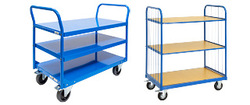

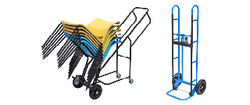


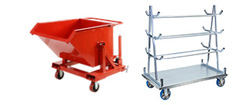
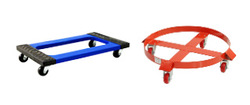
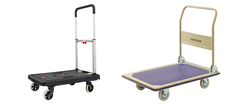
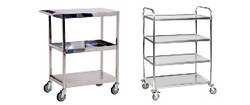

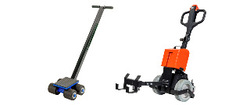
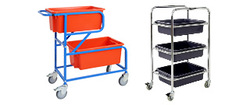
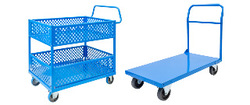
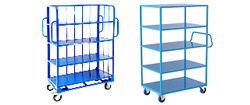
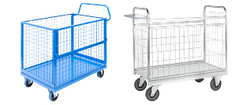
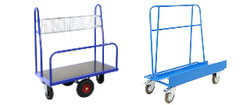
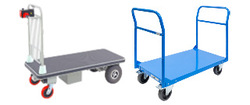
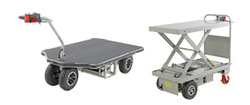
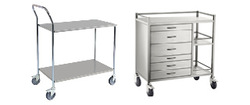
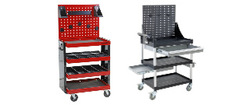
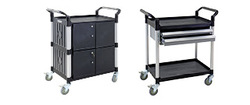
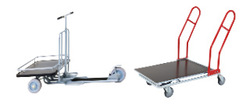
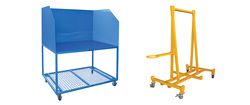



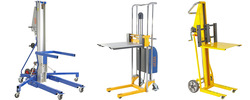



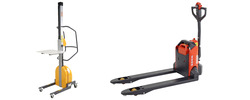
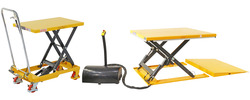
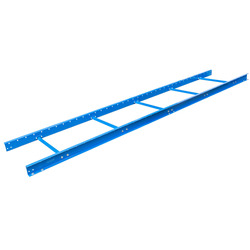
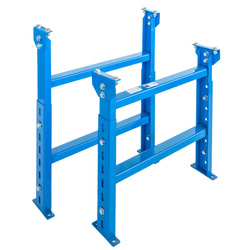

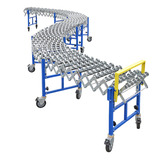



















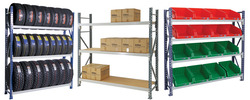
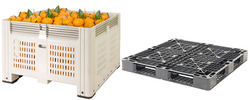
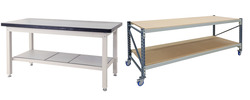
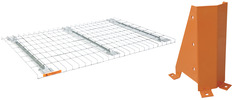
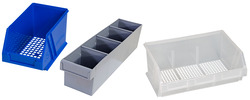

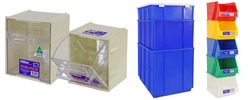

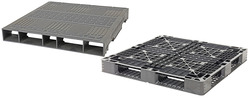

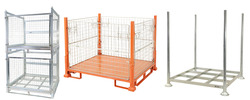

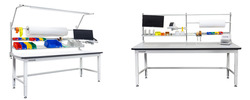


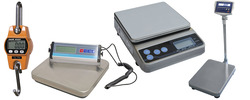



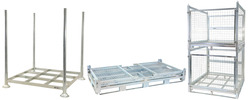
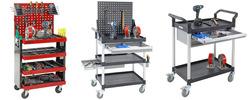
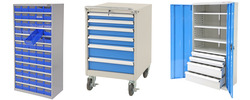

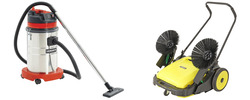





















































 Trolleys / Hand Trucks
Trolleys / Hand Trucks 2 Tier Trolleys
2 Tier Trolleys 3 Tier Trolleys
3 Tier Trolleys Aluminium Trolleys
Aluminium Trolleys Appliance & Hand Trucks
Appliance & Hand Trucks Cage Trolleys
Cage Trolleys Cleaning Carts & Trolleys
Cleaning Carts & Trolleys Construction Trolleys
Construction Trolleys Dollies
Dollies Foldable Trolleys
Foldable Trolleys Hospital Trolleys
Hospital Trolleys Laundry/Linen Trolleys
Laundry/Linen Trolleys Load Skates & Tow Tugs
Load Skates & Tow Tugs Mail / Office Trolleys
Mail / Office Trolleys Multi Purpose Trolleys
Multi Purpose Trolleys Multi-Tier Shelf Trolleys
Multi-Tier Shelf Trolleys Order Picking Trolleys
Order Picking Trolleys Panel Cart Trolleys
Panel Cart Trolleys Platform Trolleys
Platform Trolleys Powered Trolleys
Powered Trolleys Stainless Steel Trolleys
Stainless Steel Trolleys Tool Trolleys
Tool Trolleys Utility Carts
Utility Carts Warehouse Trolleys
Warehouse Trolleys Custom Trolleys
Custom Trolleys Lifting Equipment
Lifting Equipment Forklift Attachments
Forklift Attachments Jib Attachments
Jib Attachments Lifting Hoists & Pallet Hooks
Lifting Hoists & Pallet Hooks Manual Stackers & Lifters
Manual Stackers & Lifters Pallet Jacks
Pallet Jacks Pallet Lifters
Pallet Lifters Pallet Rotators & Dispenser
Pallet Rotators & Dispenser Powered Pallet Trucks & Electric Lifters
Powered Pallet Trucks & Electric Lifters Scissor Lift Trolleys and Tables
Scissor Lift Trolleys and Tables Conveyor Equipment
Conveyor Equipment Conveyor Frames
Conveyor Frames Conveyor Stands
Conveyor Stands Roller Conveyors
Roller Conveyors Skate Wheel Conveyors
Skate Wheel Conveyors Access Equipment
Access Equipment Container & Yard Ramps
Container & Yard Ramps Step Stools & Ladders
Step Stools & Ladders Work Platforms & Crane Cages
Work Platforms & Crane Cages Drum Handling
Drum Handling Drum Storage & Bunding
Drum Storage & Bunding Drum Trolleys & Lifters
Drum Trolleys & Lifters Forklift Drum Handling
Forklift Drum Handling Containment & Spillage
Containment & Spillage Aerosol Cans Storage Cages
Aerosol Cans Storage Cages Bunded Pallets & Storage
Bunded Pallets & Storage Corrosive Goods Storage Cabinets
Corrosive Goods Storage Cabinets Flammable Liquid Cabinets
Flammable Liquid Cabinets Forklift Gas Storage Cages
Forklift Gas Storage Cages Gas Cylinder Storage
Gas Cylinder Storage Site Storage
Site Storage Spill Kits
Spill Kits Stillage Cages
Stillage Cages Waste Handling
Waste Handling Bin Lifters & Tippers
Bin Lifters & Tippers Plastic Waste Bins and Carts
Plastic Waste Bins and Carts Steel Waste and Tipping Bins
Steel Waste and Tipping Bins Storage Equipment
Storage Equipment Heavy Duty Cabinets & Benches
Heavy Duty Cabinets & Benches Heavy Duty Shelving
Heavy Duty Shelving Mega Bins & Pallets
Mega Bins & Pallets Packing Benches
Packing Benches Pallet Racking Accessories
Pallet Racking Accessories Parts Trays & Stor-Pak Bins
Parts Trays & Stor-Pak Bins Pegboard & Louvre Panels
Pegboard & Louvre Panels Plastic Bins
Plastic Bins Plastic Handling Solutions Bins
Plastic Handling Solutions Bins Plastic Pallets
Plastic Pallets Stack & Nest Bins
Stack & Nest Bins Storage Cages
Storage Cages Workplace Equipment
Workplace Equipment Workbenches
Workbenches Modular Workbenches
Modular Workbenches Electric Height-Adjustable Workbenches
Electric Height-Adjustable Workbenches Floor Matting
Floor Matting Industrial Weighing Scales
Industrial Weighing Scales Pallet Wrapping & Packaging Machinery
Pallet Wrapping & Packaging Machinery Ramps
Ramps Stationery Cupboards
Stationery Cupboards Storage and Stillage Cages
Storage and Stillage Cages Tool Trolleys
Tool Trolleys Tooling Cabinets
Tooling Cabinets Wheelie Bins
Wheelie Bins Workshop Equipment
Workshop Equipment Safety Equipment
Safety Equipment Gloves and PPE
Gloves and PPE Pallet Rack Post Protectors
Pallet Rack Post Protectors Safety Barriers & Bollards
Safety Barriers & Bollards Safety Knives & Cutters
Safety Knives & Cutters Signs and Traffic Supplies
Signs and Traffic Supplies Tool & First Aid Boxes
Tool & First Aid Boxes Construction Equipment
Construction Equipment Concrete Equipment
Concrete Equipment General Site Equipment
General Site Equipment Lifting Equipment
Lifting Equipment Site Storage
Site Storage Waste
Waste  MHA's Specials
MHA's Specials

.jpg)









